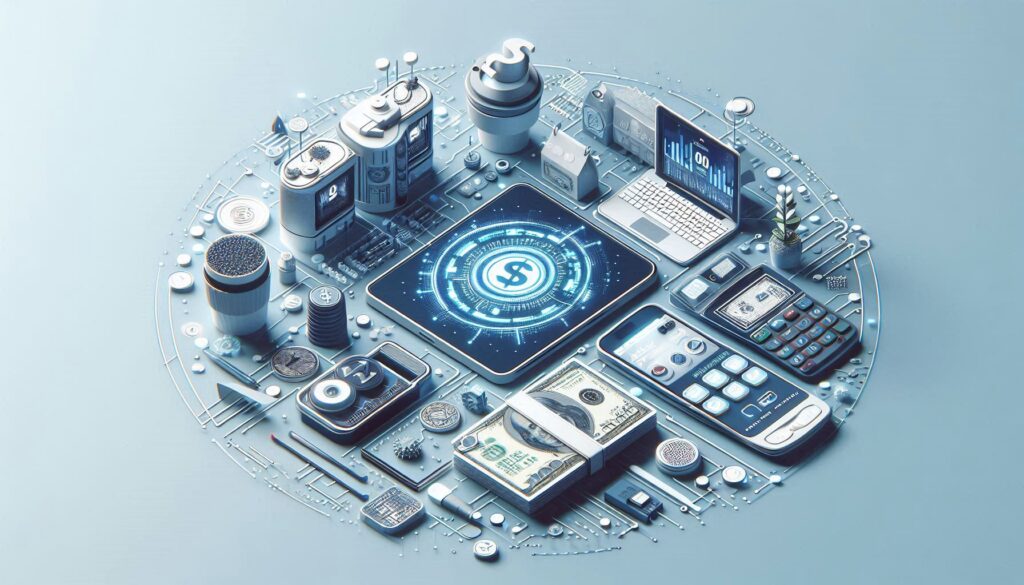In recent years, payment fintechs have dramatically reshaped the landscape of how American consumers handle their finances. These financial technology companies have introduced innovations that make transactions faster, more convenient, and more secure.
As their influence continues to grow, it is essential to examine how these changes impact consumer behavior in the United States. This article will explore how the growing presence of fintechs is altering American spending habits. We will delve into the diverse services they provide, the challenges they face, and what the future holds for financial technology in the United States.
The rise of digital wallets

Digital wallets are one of the most significant contributions of fintech to consumer finance. A digital wallet allows users to store funds, make transactions, and even manage their financial accounts from a smartphone. Payment fintechs like PayPal, Venmo, and Apple Pay have revolutionized the way people pay for goods and services. These platforms offer a convenience that traditional banking simply cannot match.
By offering quick access to funds and easy-to-use interfaces, digital wallets have gained a substantial foothold in the daily financial activities of many Americans. The adoption of these services is so profound that many consumers now prefer using digital forms of payment over cash or traditional debit and credit cards.
In 2020, digital wallet transactions made up nearly half of all in-store mobile payments in the United States. The appeal is clear: ease of use, strong security measures, and the ability to carry out transactions from virtually anywhere. These benefits illustrate why digital wallets are likely to grow even more popular in the years to come.
Security and convenience driving adoption
One of the biggest appeals of digital wallets is the combination of security and convenience they offer. With encryption, biometric security features, and real-time transaction alerts, consumers feel safer using these platforms than they might with physical cash or cards. Payment fintechs are continually updating their security measures, staying ahead of potential threats to maintain consumer trust.
Moreover, the convenience factor cannot be overstated. Digital wallets provide a one-stop-shop solution, allowing users to manage their financial activities without the need to switch between various apps or platforms. From splitting bills with friends to shopping online, these solutions simplify everyday financial tasks.
Impact on traditional banking
The evolution of digital wallets is also affecting the traditional banking sector. Banks are now feeling the pressure to innovate to keep pace with their fintech counterparts. Many financial institutions have started investing in their own tech solutions or partnering with fintech firms to stay relevant.
For consumers, this competition is beneficial. It drives improved services, lower fees, and a focus on customer satisfaction. Fintechs have essentially set a new standard in consumer expectations, forcing banks to rethink their offerings. Ultimately, while fintechs continue to capture a growing share of everyday transactions, traditional banks still play a crucial role.
The emergence of peer-to-peer platforms
Peer-to-peer (P2P) platforms have further expanded the capabilities of fintech solutions in the United States. These services facilitate direct money transfers between individuals, avoiding the need for intermediary banks. This is transforming the landscape of personal transactions.
Services like Venmo, Zelle, and Cash App allow users to transfer money with just a few taps on their smartphones, making it easier than ever to send and receive funds. The simplicity and speed of these transfers are driving their rapid adoption among consumers.
Transforming social payments
With the rise of social media, the demand for seamless, integrated financial solutions has become more prominent. Social payments, facilitated by P2P platforms, allow users to send money as easily as they might send a text message. This convenience has made P2P apps popular for both planned and spontaneous payments.
For instance, splitting a dinner bill, contributing to a group gift, or paying a friend for concert tickets can all be done effortlessly through these platforms. This capability is fostering a cashless culture among younger Americans, who increasingly prioritize speed and convenience.
The future landscape of P2P payments
Looking forward, the P2P payment ecosystem is expected to grow even more sophisticated. We may see expanded integration of artificial intelligence and machine learning to better understand consumer behavior and provide personalized financial solutions.
P2P fintech firms are exploring opportunities to integrate with various consumer-facing technologies, including social media platforms and e-commerce sites, further embedding themselves in the digital financial space. This evolution is likely to enhance user experience, offering more streamlined and intuitive services.
The ongoing expansion and adoption of P2P payment services highlight the significant impact of fintech innovations on American consumer behavior. As these services evolve, they will continue to challenge traditional banking practices and redefine financial transactions for the modern consumer.
